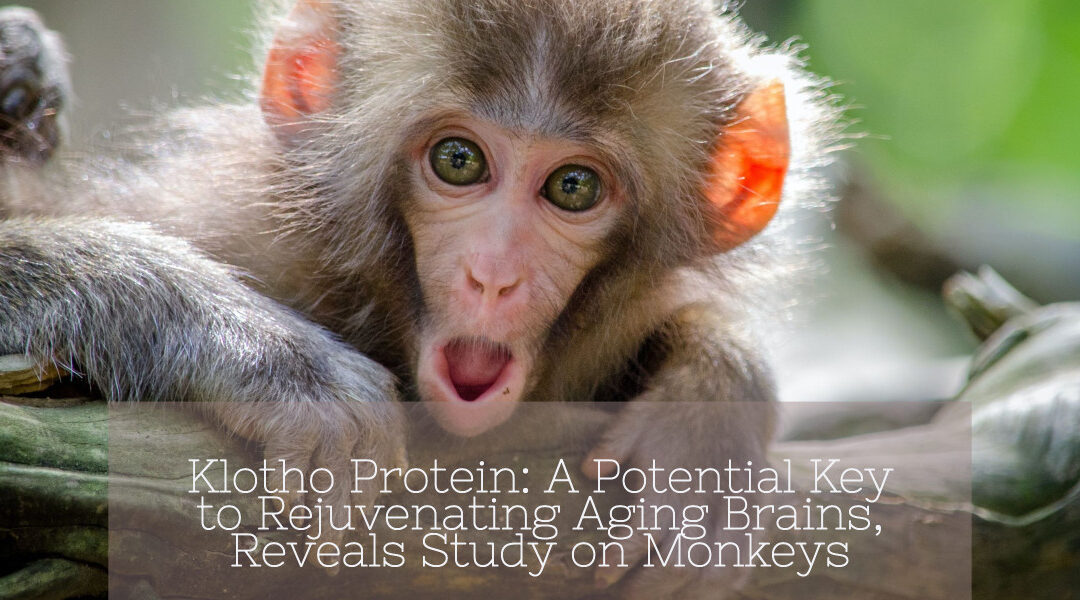KLOTHO, the ancient Greek goddess of fate responsible for spinning the thread of life, might hold the key to revitalizing the aging brain. In a study recently published in the journal Nature Aging, researchers from Yale University and the University of California, San Francisco found that a single injection of the klotho protein led to modest improvements in cognitive function in older monkeys, with effects lasting for two weeks. These findings have opened up promising avenues for researching the rejuvenation of brain function in older adults.
Dena Dubal, a professor of neurology at UCSF and the senior author of the study, explains that cognitive decline due to aging is one of the most challenging biomedical problems, lacking effective solutions. After accidentally discovering the cognitive-boosting effects of klotho in mice during previous research, Dubal emphasized the importance of testing this phenomenon in a brain similar to humans.
Klotho protein is naturally produced by the kidney and circulates in the blood. It has been associated with improved health and lifespan. According to Orson Moe, a kidney specialist and professor at the University of Texas Southwestern Medical Center, klotho acts as a protective agent, regulating kidney function and metabolism, thereby promoting overall well-being.
Discovered in 1997 by pathologist Makoto Kuro-o at the National Institute of Neuroscience in Tokyo, klotho protein deficiency in mice resulted in a syndrome resembling human aging, including early onset heart disease, cancer, cognitive decline, and organ failure. Conversely, mice producing higher levels of klotho lived 20 to 30 percent longer than those with normal levels.
In humans, higher levels of klotho protein have been associated with health benefits. Although klotho levels naturally decline with age, some individuals have higher levels compared to others. In a 2014 study, Dubal and her colleagues examined over 700 participants aged 52 to 85 and found that those with elevated klotho levels—approximately one in five people studied—performed better on thinking and memory tests.
In the recent study, Dubal and her coauthors investigated whether klotho would produce similar effects in monkeys, which are commonly used as a model for humans due to genetic similarities. Working memory, which involves holding information in mind temporarily, tends to decline as individuals age. The research team assessed the working memory capacity of 18 rhesus macaques, equivalent to approximately 65 human years. The monkeys were required to remember the location of a hidden treat within an array of compartments, a well-established lab test that relies on working memory and remains challenging over time.
After administering a single low dose of klotho protein under the skin of each monkey, raising the protein levels to those typically present at birth, the researchers observed that the animals made correct choices more frequently than before the injection. The team conducted food-finding trials in batches of 20, four hours after the injection, and continued to retest the monkeys over the following two weeks. Overall, klotho improved their performance on the easier task by approximately 6 percent and on the more challenging task by approximately 20 percent, according to Dubal.
Jorge A. Genovese M.D., Ph.D., Vice President Bioelectric Regeneration Research, adds, “Studies showing peripheral Klotho’s positive effects on brain health, a molecule that can’t cross the brain blood barrier, give a different value to our specific electrical signals that induced Klotho upregulation in myoblasts, adult stem cells, and fibroblasts. We are discussing the possibility of achieving antiaging and other therapeutic effects on the brain through the use of surface, non-invasive electrodes applied to the skin. It adds a great deal to what we can offer healthy people, neurological patients, or others with conditions like kidney failure and long-term bed rest and more. I am sure we can use these amazing possibilities to achieve our goals sooner.”
The researchers conducted previous studies with mice, demonstrating that both low and high doses of klotho protein enhanced cognition, resulting in improved performance in various maze tasks that challenge learning and memory. However, in the monkey study, when doses of 10, 20, and 30 micrograms per kilogram of body weight were administered, the benefits plateaued at the 10-microgram dose. This highlights an important consideration for future research, particularly when considering potential klotho injections in humans. According to Eric Verdin, CEO of the Buck Institute for Research on Aging, it is not always the case that “more is better” when it comes to dosing.
Humans are born with approximately five times more klotho protein than they have in adulthood. In the monkey experiment, the low dose of klotho administered was equivalent to levels observed during infancy. Dubal speculates that for primates like monkeys and humans, dosing within a range that the body has previously experienced, without exceeding it, might be more important than achieving excessively high levels. The next step will involve testing even lower doses in human clinical trials to determine the optimal therapeutic range for promoting brain health, as Dubal suggests that replenishment rather than a super-dose may be essential.
Overall, the findings of this study hold promise for further understanding the role of klotho protein in brain rejuvenation, offering potential avenues for future research and the development of treatments to address cognitive decline associated with aging.

